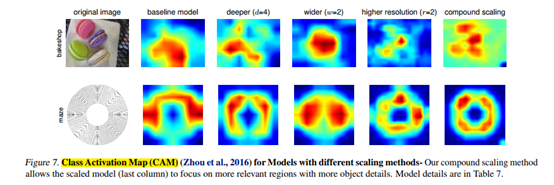CAM,class activation map来自于论文《Learning Deep Features for Discriminative Localization》。通过based model+CAM之后,我们可以得到如下图所示的热度图,在对最后结果影响比较大的地方生成的热度就比较高。

这项技术非常有用但是存在一些缺陷的。首先我们必须改变网络结构,例如把全连接层改成全局平均池化层,这不利于训练。第二是这是基于分类问题的一种可视化技术,帮助我们更好的理解模型内部的学习情况。但是该方法用于回归问题可能就没有这么好的效果。
为了解决第一个问题,2017年出现了一种改进的技术叫Grad-CAM,Grad-CAM可以不改变网络结构进行可视化,详见这篇论文《Grad-CAM: Visual Explanations from Deep Networks via Gradient-based Localization》 (2017 ICCV)。
以下的代码主要来自于博文,但是原作者的代码很零散,不能直接运行。我前者基础上进行整合:
import numpy as np
import tensorflow as tf
import cv2
VGG16_model = tf.keras.applications.VGG16(include_top=True)
VGG16_model.summary()
from tensorflow.keras.applications.vgg16 import preprocess_input, decode_predictions
def prepocess(x):
x = tf.io.read_file(x)
x = tf.image.decode_jpeg(x, channels=3)
x = tf.image.resize(x, [224,224])
x =tf.expand_dims(x, 0) # 扩维
x = preprocess_input(x)
return x
img_path='cat.jpg'
img=prepocess(img_path)
Predictions = VGG16_model.predict(img, steps=1)
print('Predicted:', decode_predictions(Predictions, top=3)[0])
# 应用Grad-CAM 算法
# 构建一个同时输出最后一层的卷积层和类别预测结果的网络
from tensorflow.keras import models
last_conv_layer = VGG16_model.get_layer('block5_conv3')
heatmap_model =models.Model([VGG16_model.inputs], [last_conv_layer.output, VGG16_model.output])
# Grad-CAM 算法实现
import tensorflow.keras.backend as K
with tf.GradientTape() as gtape:
conv_output, Predictions = heatmap_model(img)
prob = Predictions[:, np.argmax(Predictions[0])] # 最大可能性类别的预测概率
grads = gtape.gradient(prob, conv_output) # 类别与卷积层的梯度 (1,14,14,512)
pooled_grads = K.mean(grads, axis=(0,1,2)) # 特征层梯度的全局平均代表每个特征层权重
heatmap = tf.reduce_mean(tf.multiply(pooled_grads, conv_output), axis=-1) #权重与特征层相乘,512层求和平均
with tf.Session() as sess:
init = tf.initialize_all_variables()
sess.run(init)
Predictions,heatmap = sess.run([Predictions, heatmap])
# 绘制激活热力图
heatmap = np.maximum(heatmap, 0)
max_heat = np.max(heatmap)
if max_heat == 0:
max_heat = 1e-10
heatmap /= max_heat
# plt.matshow(heatmap, cmap='viridis')
original_img=cv2.imread('cat.jpg')
heatmap1 = cv2.resize(heatmap[0], (original_img.shape[1], original_img.shape[0]), interpolation=cv2.INTER_CUBIC)
heatmap1 = np.uint8(255*heatmap1)
heatmap1 = cv2.applyColorMap(heatmap1, cv2.COLORMAP_JET)
frame_out=cv2.addWeighted(original_img,0.5,heatmap1,0.5,0)
cv2.imwrite('Egyptian_cat.jpg', frame_out)
cv2.imwrite("heatmap.jpg", heatmap1)
# 前三类结果比较
# 首先使用如下代买对预测的最大值进行修改,得到第二和第三可能性的预测结果
Predictions3=Predictions
Predictions3[0][np.argmax(Predictions3[0])]=np.min(Predictions3)
Predictions3[0][np.argmax(Predictions3[0])]=np.min(Predictions3)






















 1725
1725











 被折叠的 条评论
为什么被折叠?
被折叠的 条评论
为什么被折叠?








